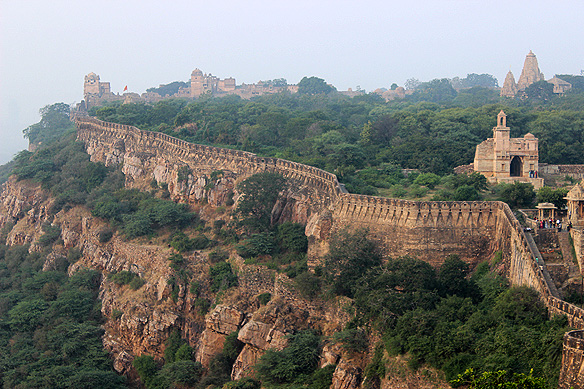
Chittorgarh Fort
Chittorgarh, India
- Enjoy panoramic views.
- Explore the Vijay Stambh (Victory Tower).
- Learn about jauhar at Jauhar Kund.
- See Meera Bai Temple.
- Visit Rana Kumbha's Palace ruins.
- Visit the Archaeological Museum.
- Walk through the fort gates.
Known for:
Description:
Chittorgarh Fort, a UNESCO World Heritage site, stands as a testament to Rajput valor and sacrifice. Perched atop a 180-meter high hill, the fort is a sprawling complex encompassing palaces, temples, towers, and reservoirs. Explore the iconic Vijay Stambh (Victory Tower) and Kirti Stambh (Tower of Fame), marvel at the ruins of Rana Kumbha's Palace, and pay homage at the Meera Bai Temple. The fort's imposing gates and intricate architecture offer a glimpse into the rich history and cultural heritage of Rajasthan. Don't miss the poignant stories of jauhar (self-immolation) that echo within its walls, reminding visitors of the sacrifices made for honor and freedom. The fort provides panoramic views of the surrounding landscape, making it a photographer's delight.
History:
Chittorgarh Fort's history is steeped in tales of bravery and sacrifice. It served as the capital of the Sisodia Rajputs for centuries. The fort witnessed three major sieges. The first, in 1303, was by Alauddin Khilji, who was captivated by the beauty of Rani Padmini. The second siege occurred in 1535 by Bahadur Shah of Gujarat, and the third in 1567 by Mughal Emperor Akbar. Each siege ended with the Rajput warriors performing saka (fighting to the death) and the women committing jauhar to avoid capture. The fort's resilience and the unwavering spirit of its defenders have made it a symbol of Rajput pride and resistance against foreign invaders. The fort stands as a reminder of the sacrifices made to protect their land and honor.